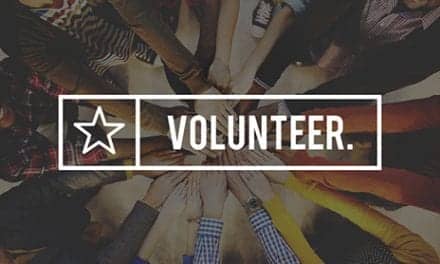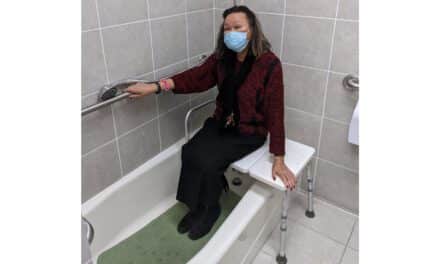Patients experiencing severe impairments after hospitalization for the novel coronavirus can greatly benefit from intensive inpatient COVID-19 rehab involving collaboration among PTs, OTs, and SLPs.
By Jillian C. Ferguson, OTR/L, and Nicole R. Gvoth, SLP
Between February 2020 and September 2021, 146.6 million cases of COVID-19 infections were reported with 7.5 million estimated hospitalizations.1 The United States consistently had a higher number of COVID-19 hospitalizations when compared to other countries.2 COVID-19 mainly affects the respiratory system with some patients rapidly progressing to acute respiratory distress and at times requiring mechanical ventilation.3
Research demonstrates that up to 80% of patients that survive acute respiratory failure experience new or worsened physical, cognitive, and/or mental health impairments that persist beyond acute care hospital discharge.4 Such impairments may affect the ability to carry out functional activities and mobility tasks crucial to quality of life and survival. Intensive inpatient COVID-19 rehab can work to remediate these impairments, facilitate safer discharges home, and improve future outcomes.
Importance of Interdisciplinary Approach
Care for patients following hospitalization for COVID-19 should incorporate an interdisciplinary approach focusing on each barrier and facilitating factor of the individual patient. Studies show that COVID-19 patients participating in intensive inpatient COVID-19 rehab made functional gains similar to those of other diagnostic groups despite presenting with significantly lower mobility and self-care scores on admission.5
Physical, occupational, and speech therapy may all play crucial roles in the treatment and recovery of COVID-19 for hospitalized patients. Research demonstrates that physical therapy in both early and late stages of infection promotes faster recovery and hospital discharge.6 Occupational therapists have worked throughout the pandemic to address various challenges to meet the vast physical, cognitive, psychological, and social needs of patients and family members following COVID-19.7 Speech language pathologists have worked to address dysphagia, cognition, and voice and tracheostomy care in individuals recovering from COVID-19.8 All three therapy disciplines can collaborate to improve outcomes for patients post COVID-19. The case studies below seek to highlight both the diverse needs of this patient population and the skilled interventions that facilitated recovery and return to home.
Case Study 1:
Mr. F was a 55-year-old male admitted to the hospital on April 10, 2020 with fever, tachycardia, tachypnea, pleuritic chest pain, and diarrhea. He tested positive for COVID-19, his respiratory worsened, and he required intubation and placement on a mechanical ventilator. Mr. F had a complicated hospital course including prolonged ICU stay with acute kidney injury, tracheostomy and PEG tube placement, and development of sacral and gluteal wounds with placement of a wound vac.
Mr. F was discharged to Kessler Institute for Rehabilitation’s Chester, NJ, campus in June of 2020 for further medical observation and a comprehensive therapy program. Upon admission to Kessler, Mr. F’s functional deficits impacting his independence included overall strength and endurance, left-sided weakness and sensation deficits, sitting balance, foot drop, cognitive and speech impairments, and dysphagia. Complicating factors included significant pain, bilateral knee contractures, and complex sacral wounds. While at Kessler Institute, Mr. F completed an intensive therapy program including physical therapy, occupational therapy, and speech therapy.
Physical Therapy
On evaluation in physical therapy, it was unsafe to trial ambulation, elevations, wheelchair propulsion, or transfers. He required a mechanical lift for transfers and required up to moderate assistance for static sitting. Interventions in physical therapy included bed mobility, sitting tolerance, PROM to bilateral knees, transfers, ambulation trials, and progression to stair training.
Occupational Therapy
On evaluation in occupational therapy, Mr. F required total assistance of two for all bed level activities of daily living, mechanical lift transfers, and total assistance of three people for bed mobility. Interventions throughout his stay included bed mobility, self-care tasks with adaptive equipment at a bed level progressing to wheelchair level, range of motion, sensory education and scapular range of motion for proximal stability, and transfers.
Speech Therapy
Mr. F’s initial speech therapy evaluation consisted of both a cognitive communication assessment and a clinical bedside swallowing evaluation. His cognitive communication evaluation revealed a voice disorder and mild to moderate cognitive deficits in the areas of attention, memory, reasoning, and impulsivity. Additionally, the patient presented with dysphagia and was receiving all nutrition and hydration via PEG tube. Speech therapy interventions included cognitive strategy use, functional task completion, initiation of Free Water Protocol, therapeutic feeding trials, and further assessment of dysphagia via a Videofluoroscopic Swallow Study.
Throughout his stay at Kessler, Mr. F’s interdisciplinary team also included case management, nursing, psychology, dietary, internal medicine, and physiatrist services. He also had extensive wound care needs. Prior to discharge, Mr. F’s wife attended multiple family training sessions including therapy and nursing to facilitate a discharge to the community. He required home modifications, durable medical equipment, adaptive equipment, and orthotics.
Mr. F originally came in and required a hoyer lift. By the time he discharged, he was at an ambulatory level. Durable medical equipment ordered for him included a platform rolling walker, commode, padded tub transfer bench, and a manual wheelchair with a specialty cushion for his skin integrity. Home modifications included installation of grab bars to increase safety in the bathroom. Bilateral toe off braces were ordered for him to improve his ability to complete transfers and ambulation safely. Adaptive equipment recommended to increase independence with ADL tasks included a reacher, long handled shoe horn, sock aide, dressing stick, and long-handled sponge.
Mr. F was able to discharge home with his wife after a 64-day length of stay. Upon discharge, he was able to ambulate 75 feet and perform functional transfers with a platform rolling walker and supervision. He completed elevations with steadying assistance. He required up to minimal assistance for self-care tasks and progressed to modified independent for bed mobility. He progressed to a regular diet with all liquids. His cognition progressed to near baseline by date of discharge.
Case Study 2:
Mr. C’s is another case study that highlights the vital role of inpatient rehabilitation in recovering from COVID-19. Mr. C was a 49-year-old male admitted to the hospital on May 9, 2020 for shortness of breath, fever, and tachycardia. He tested positive for COVID-19 and his respiratory status worsened, requiring mechanical ventilation and PEG tube placement. A CT scan also revealed a left parietal cerebral hemorrhage.
Mr. C was eventually weaned off the ventilator, placed on oxygen via trach collar, and was discharged to Kessler Institute for Rehabilitation’s Chester, NJ, campus on July 7, 2020 to participate in an intensive rehabilitation program. On initial evaluation, Mr. C’s functional deficits included significant pain in his right arm and bilateral feet, decreased strength and endurance, flaccidity of his right upper extremity, foot drop, and cognitive impairments. His case was further complicated by anxiety and fearfulness and symptomatic orthostatic hypotension.
Physical Therapy
On evaluation in physical therapy, it was unsafe to trial ambulation, elevations, or wheelchair propulsion. He required maximal assistance with two helpers for transfers and required up to moderate assistance for static sitting. Interventions in physical therapy included use of a standing frame, weight bearing tolerance, and progression of transfers.
Occupational Therapy
On evaluation in occupational therapy, Mr. C required total assist of two for all bed-level activities of daily living and total assistance of two people for bed mobility and functional transfers. Interventions throughout his stay included blocked practice of transfers to maximize independence, pain management, hemiparesis and subluxation management, and initiating a client-centered daily planner for goal setting, memory, and tracking of progress.
Speech Therapy
On evaluation in speech therapy, Mr. C presented with mild to moderate cognitive deficits including reduced attention, short-term memory, and problem-solving ability. These cognitive deficits were attributed to his stroke, which was felt to be a complication of COVID-19. He also presented with a voice disorder with the presence of a tracheostomy. Speech therapy interventions addressed cognitive strategy training and semi-complex cognitive task completion. His speech therapist also trialed use of a speaking valve and a tracheostomy cap, which were important stepping stones to his eventual decannulation.
Throughout his stay at Kessler for intensive inpatient COVID-19 rehab, Mr. C’s interdisciplinary team also included case management, nursing, psychology, dietary, internal medicine, and physiatrist services. He had multiple wounds and skin integrity concerns, required tube feedings, and required psychology services. Mr. C’s wife attended family training sessions to prepare for his discharge home. Mr. C’s wife was present to assist the patient with a wet shower while at Kessler to problem-solve any concerns prior to discharge. Durable medical equipment was ordered for him to increase safety in his home environment.
Durable medical equipment ordered for Mr. C included a narrow base quad cane, manual wheelchair, and hospital bed. Adaptive equipment recommended to increase independence with ADL tasks included a long-handled sponge and a dressing stick.
Mr. C was able to discharge home with his wife after a 37-day length of stay. Upon discharge, he was able to ambulate 75 feet and perform functional transfers with a narrow-base quad cane and contact guard assistance. He required up to minimal assistance for self-care tasks and progressed to being independent for bed mobility. He progressed to a regular diet with all liquids and he was successfully decannulated. He also made gains in vocal function via respiration-phonation exercises and in cognitive function through skilled speech therapy sessions.
Conclusion
These case studies highlight the gains that patients with COVID-19 can experience through participation in an intensive inpatient COVID-19 rehab program. With the high number of COVID-19 cases and the many complications that can accompany this illness, it is critical to understand inpatient rehabilitation’s role in recovery. Highest outcomes can be achieved when there is collaboration among various disciplines to address medical, physical, and cognitive impairments; anticipate barriers to goal achievement; create solutions; and educate patients and their families.
Occupational, physical, and speech therapists have been successful in meeting the many needs of this diverse and challenging patient population. Therapists across the nation have empowered their patients throughout the pandemic, fostered their resilience, and set them up for success for return to their homes and communities. RM
Jillian C. Ferguson, OTR/L, is an occupational therapist at Kessler Institute for Rehabilitation in Chester, New Jersey.
Nicole R. Gvoth, SLP, is a speech language pathologist at Kessler Institute for Rehabilitation in Chester, New Jersey. She also has a Master of Science degree in Communication Disorders. For more information, contact [email protected].
References
1. Estimated COVID-19 Burden. Available at: https://www.cdc.gov/coronavirus/2019-ncov/cases-updates/burden.html#est-infections. Accessed July 6, 2022.
2. Figure 1. Coronavirus (COVID-19) Hospitalizations. https://ourworldindata.org/covid-hospitalizations. Accessed July 7, 2022.
3. Li X, Ma X. Acute respiratory failure in COVID-19: is it “typical” ARDS? Crit Care. 2020;24(1):198. Published 2020 May 6. doi:10.1186/s13054-020-02911-9
4. Hosey MM, Needham DM. Survivorship after COVID-19 ICU stay. Nat Rev Dis Primers. 2020;6(1):60. Published 2020 Jul 15. doi:10.1038/s41572-020-0201-1
5. Abramoff BA, Dillingham TR, Caldera FE, Ritchie MD, Pezzin LE. Inpatient Rehabilitation Outcomes After Severe COVID-19 Infections: A Retrospective Cohort Study. Am J Phys Med Rehabil. 2021;100(12):1109-1114. doi:10.1097/PHM.0000000000001885.
6. Santo Paz LES, Bezerra BJDS, Pereira TMM, da Silva WE. COVID-19: the importance of physical therapy in the recovery of workers’ health. Rev Bras Med Trab. 2021;19(1):94-106. Published 2021 Apr 30. doi:10.47626/1679-4435-2021-709.
7. Malloy J, Cahill S, Lieberman D, Trudeau SA, Harvison N. Responding to COVID-19: Resilience in Occupational Therapy. Am J Occup Ther. 2021;75(Supplement_1):7511170010p1-7511170010p3. doi:10.5014/ajot.2021.049301
8. Mohapatra B; CCC-SLP, Mohan R; CCC-SLP. Speech-Language Pathologists’ Role in the Multi-Disciplinary Management and Rehabilitation of Patients with COVID-19. J Rehabil Med Clin Commun. 2020;3:1000037. Published 2020 Jul 27





